If you want to set up a Pleco fish tank but don’t know where to begin, you’re in the right place.
In this guide, I’ll take you through each step. We’ll cover tank size, water conditions, equipment, tank mates for Pleco fish, and more.
Let’s dive right into it.

| Parameter | Details for Plecos |
| Temperature | 78-82°F (25-28°C) |
| pH Level | 6.5-7.5 |
| Ammonia Level | 0 ppm (parts per million) – Any amount is toxic |
| Nitrite Level | 0 ppm – Nitrites are harmful at any concentration |
| Nitrate Level | Below 40 ppm, preferably closer to 20 ppm |
| Water Hardness | Soft to moderately hard |
| Minimum Tank Size | Depending on species, at least 20-40 gallons for smaller types |
| Ideal Tank Size | 55 gallons and up, depending on the Pleco species |
| Lighting Hours | 8-10 hours per day |
| Lighting Intensity | Moderate – Plecos are not light-sensitive, plants may need specific light |
| Filter Flow Rate | Moderate to replicate a gentle river flow |
| Heater Power | Depending on tank size, but typically 3-5 watts per gallon |
| Substrate | Fine gravel or sand, to mimic natural riverbeds |
| Plants | Hardy species like Java Fern or Anubias to prevent damage from Plecos |
Also Read: Pleco Fish Care Guide
Tank Size
For most Plecos, a minimum of 55 gallons is often recommended as a starting point.
However, the ideal tank size can vary significantly based on a few factors. It’s essential to understand the specific requirements of the Pleco species you’re keeping.
- Species Variation: Plecos come in over 150 species. For instance, a Common Pleco needs 100 gallons, while a Bristlenose is fine in 30.
- Growth Potential: Remember their adult size. A Pleco might start small, but some species can grow impressively, outgrowing initial setups.
- Behavioral Needs: Plecos have unique behaviors, like hiding. An appropriate tank offers them ample hiding spots and comfort.
- Environmental Requirements: Plecos need stable water parameters. A larger volume helps maintain consistent water conditions, aiding their health.
Also Read: Pleco Fish Tank Size
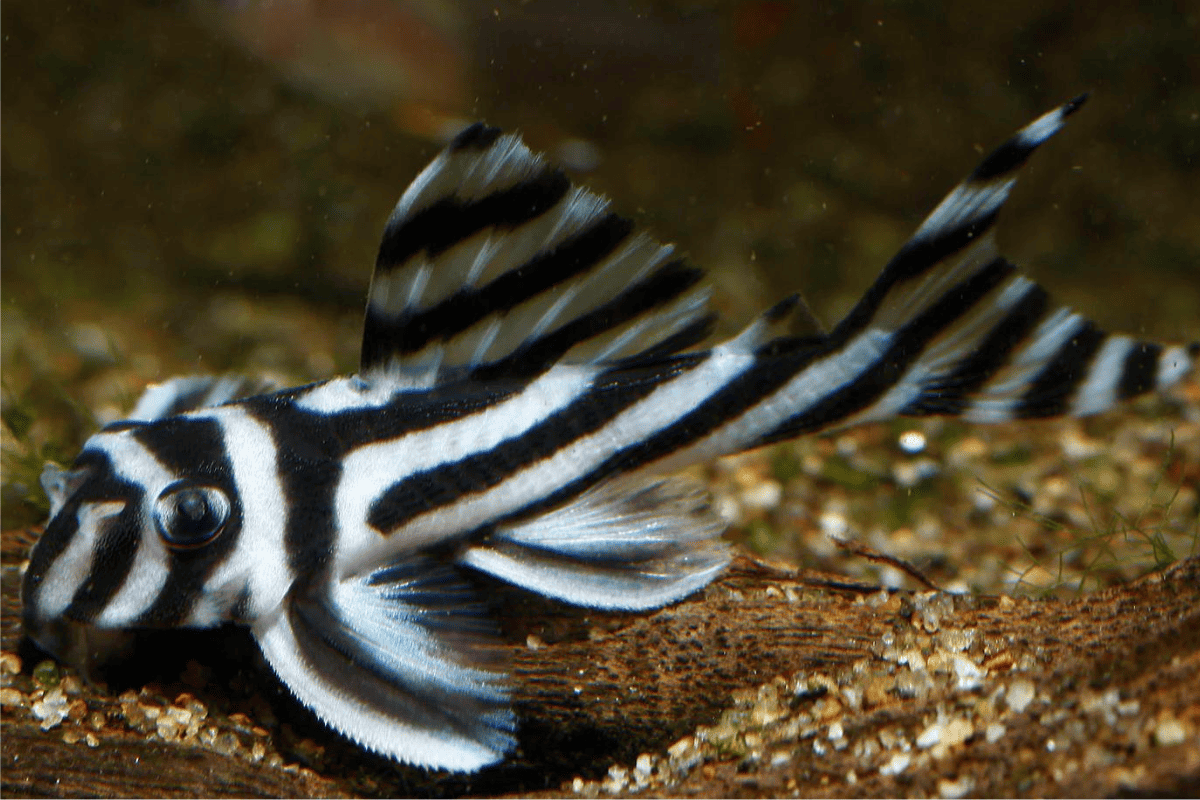
Here’s a table of 25 Pleco species with their recommended tank sizes:
| Pleco Species | Average Size (inches) | Recommended Tank Size (gallons) |
| Clown Pleco | 3.5-4 | 20 |
| Bristlenose Pleco | 4-6 | 30 |
| Rubber Lip Pleco | 4-7 | 30 |
| Medusa Pleco | 5-6 | 40 |
| Peppermint Pleco | 5-7 | 40 |
| Butterfly Pleco | 6 | 50 |
| Blue Phantom Pleco | 5-7 | 55 |
| Gold Nugget Pleco | 7-9 | 55 |
| Zebra Pleco | 3-4 | 55 |
| Snowball Pleco | 5.5-6 | 55 |
| Flash Pleco | 6-7 | 60 |
| Emperor Pleco | 10-12 | 70 |
| Royal Pleco | 13-15 | 80 |
| Sunshine Pleco | 12 | 80 |
| Magnum Pleco | 11 | 90 |
| Green Phantom Pleco | 6-7 | 100 |
| Common Pleco | 12-24 | 100 |
| King Tiger Pleco | 5-6 | 100 |
| Rhino Pleco | 11-12 | 110 |
| Sailfin Pleco | 15-20 | 125 |
| Trinidad Pleco | 13-15 | 130 |
| Spotted Pleco | 20-24 | 150 |
| Adonis Pleco | 20-30 | 180 |
| Cactus Pleco | 15-24 | 200 |
| Titan Pleco | 24-30 | 250 |
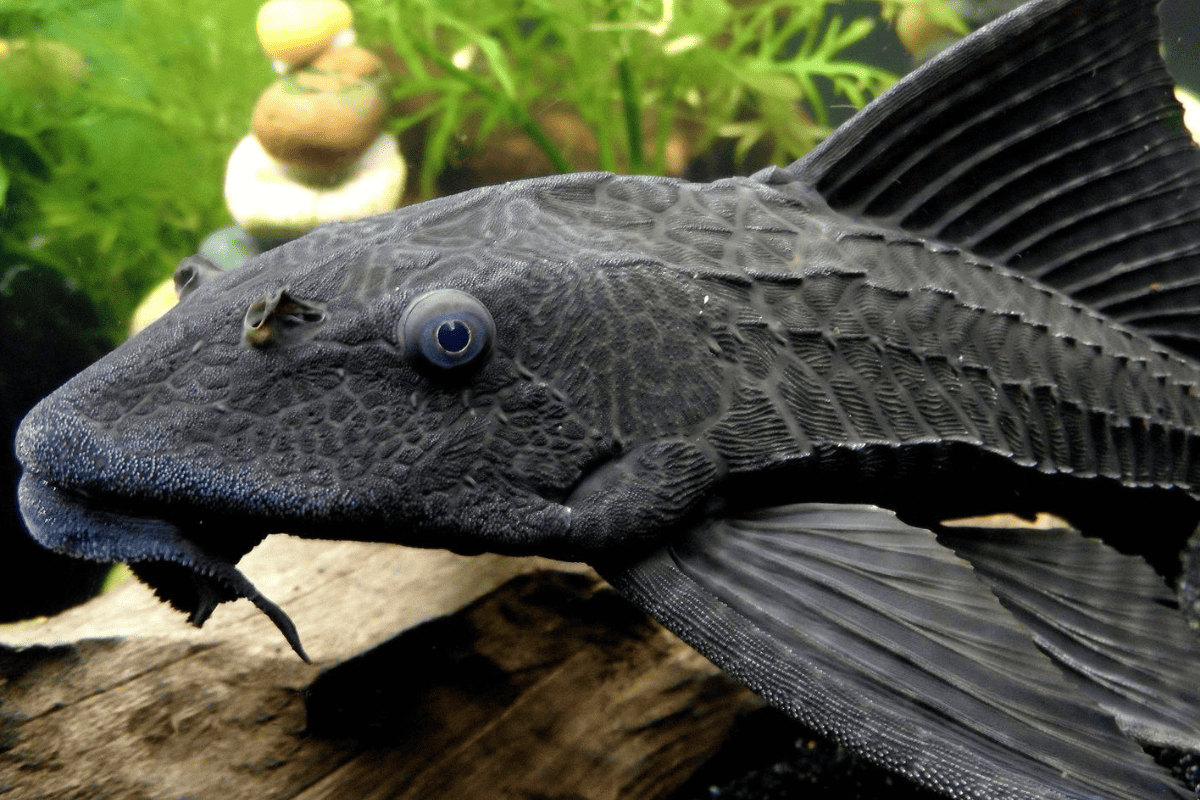
Water Parameters
Water parameters refer to the various chemical and physical qualities of the water in an aquarium, ensuring fish, like Plecos, thrive.
Properly maintained parameters are crucial for the health and longevity of Plecos.
- pH Level: Plecos prefer a pH range of 6.5-7.5. This is the measure of acidity or alkalinity, and drastic swings can stress them.
- Temperature: Plecos thrive at temperatures between 74-80°F (23-27°C). Consistent temperatures help in avoiding shocks.
- Hardness: General hardness (GH) and carbonate hardness (KH) matter. For Plecos, a moderate hardness level, around 4-15° dGH, is ideal.
- Ammonia, Nitrite, and Nitrate: These are waste products. For Plecos’ health, ammonia and nitrite should be 0 ppm, with nitrate kept low.

Essential Equipment for Plecos
Choosing the right gear for your Plecos is crucial during setup. Here’s what you need to know:
1. Filter
My recommendation: Fluval FX6 Aquarium Canister Filter (link to Amazon).
For Plecos, an efficient filtration system is paramount, ensuring both water clarity and optimal health. A good filter aids in toxin reduction, debris removal, and water circulation.
- Debris Removal: Plecos are prolific waste producers; a filter rated 10-20% above your tank’s volume is essential for cleanliness.
- Biofiltration: Incorporate media like ceramic rings to foster beneficial bacteria, optimizing ammonia and nitrite breakdown.
- Water Circulation: Filters should turnover the tank’s water 4-6 times hourly, ensuring oxygen-rich zones for Plecos.
Also Read: Do Plecos Need A Filter?

2. Heater and Thermometer
My recommendation: Fluval E300 Advanced Electronic Heater (link to Amazon).
Stable water temperature is crucial for Plecos’ well-being. Employing a reliable heater and thermometer ensures the right environment.
- Consistent Temperature: Plecos require 74-80°F (23-27°C); adjustable heaters with thermostats help maintain this range.
- Accurate Monitoring: Use a high-quality, submerged thermometer, ideally digital, for precise readings and adjustments.
- Placement: Position the heater near the filter outlet, distributing the warmed water evenly, benefiting Plecos.
Also Read: Do Plecos Need A Heater?
3. Canopy and Lights
My recommendation: Hygger Auto On Off LED Aquarium Light (link to Amazon).
Plecos are nocturnal, but they still need a day-night cycle. A canopy with adjustable lighting ensures they get the right balance.
- UV Exposure: Plecos need indirect light; LED aquarium lights with blue and white diodes are recommended.
- Protection: A canopy prevents Plecos from jumping out and reduces water evaporation, keeping conditions stable.
- Light Cycle: Use timers to simulate a natural 12-hour day-night cycle, helping maintain Plecos’ circadian rhythms.
Also Read: Do Plecos Need Light?
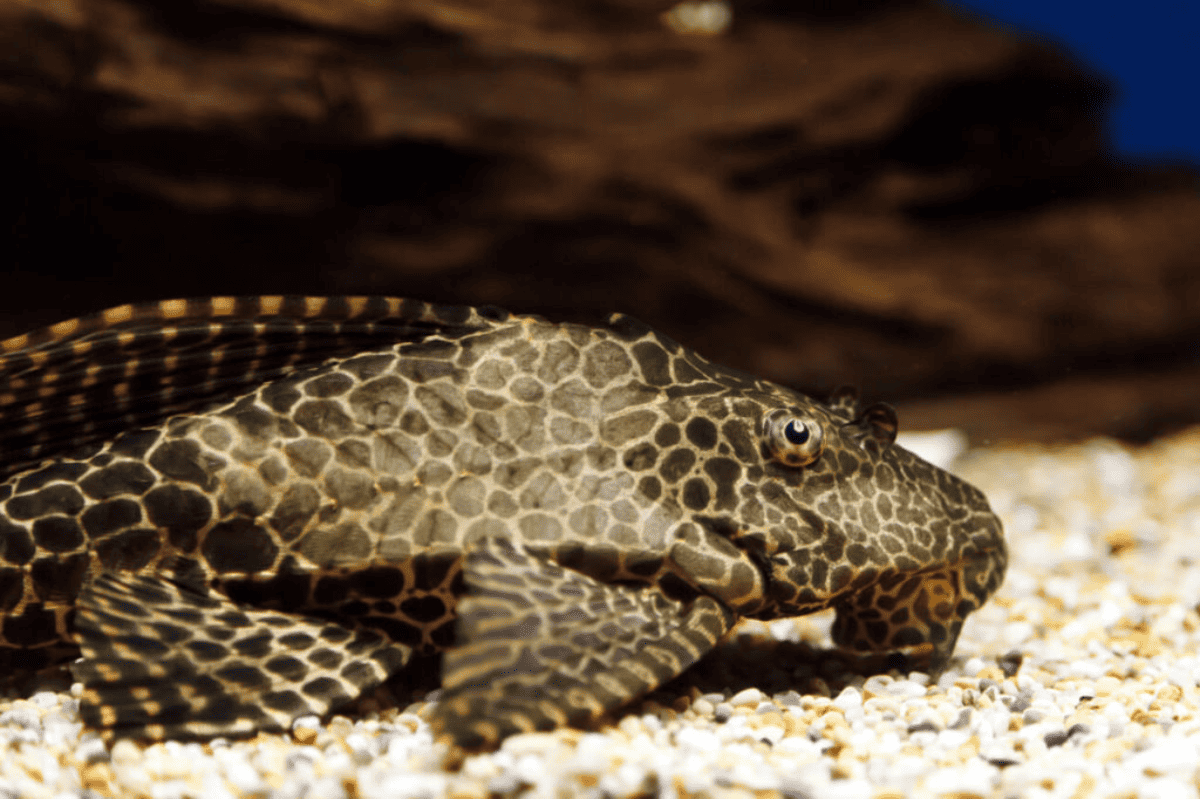
4. Air Bubbler
My recommendation: Hygger Aquarium Air Stone (link to Amazon).
Enhancing oxygenation is crucial for Plecos. An air bubbler ensures the tank has ample dissolved oxygen.
- Oxygen Saturation: In warmer water, oxygen levels drop; bubblers aid in maintaining optimal levels for Plecos.
- Water Movement: Bubblers create gentle currents, which Plecos enjoy, preventing any stagnant zones in the tank.
- Aesthetic Value: The gentle bubbling sound and visual effect not only benefit Plecos but also make for a pleasant viewing experience.
Also Read: Do Plecos Need A Bubbler?

5. Air Pump
My Recommendation: Tetra Whisper Air Pump (link to Amazon).
Beyond just bubbles, an air pump plays a vital role in enhancing the aquarium’s oxygenation, especially beneficial for Plecos.
- Enhanced Oxygen: Even with good filtration, air pumps elevate dissolved oxygen, optimizing conditions for Plecos.
- Backup Aeration: In case of filter failures, an air pump acts as a safety net, ensuring continuous oxygen supply.
- Equipment Longevity: Regular oxygen flow prevents water stagnation, extending the life of heaters and filters for a Pleco-friendly environment.
Also Read: Do Plecos Need An Air Pump?

6. Aquarium Siphon and Mesh
My recommendation: Laifoo 7ft Aquarium Siphon (link to Amazon).
Regular tank maintenance is pivotal, and a siphon paired with a mesh ensures the habitat remains pristine for Plecos.
- Waste Removal: Plecos produce significant debris; using a siphon helps in removing detritus from substrates effectively.
- Water Changes: Regularly changing 20-25% of the tank’s water using a siphon maintains the water quality for Plecos.
- Fish Safety: A mesh prevents smaller Plecos or their fry from being inadvertently siphoned during maintenance, ensuring their well-being.
Aquarium Design And Foliage
The design of your aquarium and the plants you use are essential for creating a thriving environment for your Plecos. Here’s what you should know:
1. Plant Life
A verdant tank recreates the Plecos’ natural environment, offering them shelter and potential supplementary nourishment.
- Natural Environment: Plants like Java moss and Amazon sword help emulate the rivers and streams Plecos come from.
- Water Quality: Plants absorb nitrates and ammonia, improving conditions, making the habitat more conducive for Plecos.
- Supplemental Diet: Some Plecos might nibble on plants; choosing hardy varieties like Java Fern ensures longevity.
Also Read: 11 Plants Your Plecos Will Love In Their Tank
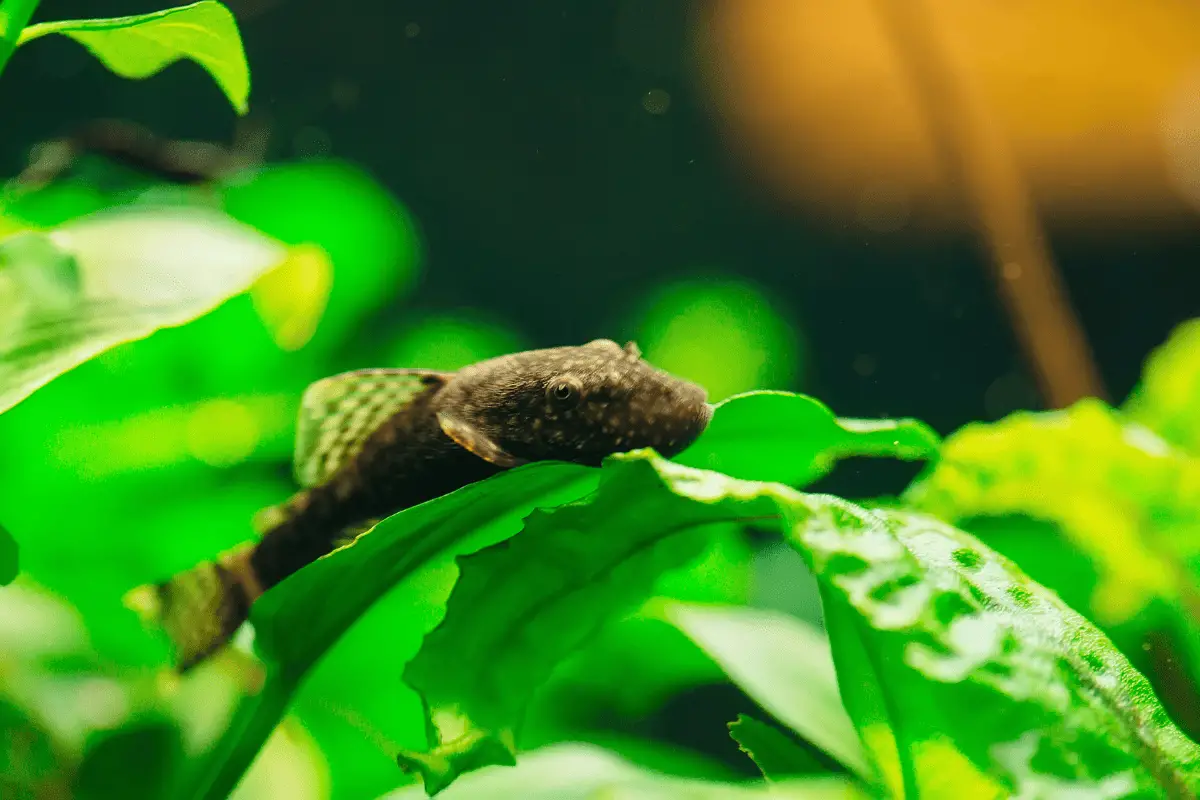
2. Driftwood
For many Plecos, driftwood isn’t just decoration—it’s a necessity, offering both sustenance and refuge.
- Digestive Health: Certain Plecos extract nutrients from wood, essential for their dietary needs.
- Natural Feel: Driftwood mimics the natural environments of streams and riverbanks where Plecos flourish.
- Hiding & Resting: Driftwood offers Plecos hiding places, ensuring they feel safe and giving them spaces to rest.
Also Read: Do Plecos Need Driftwood?
3. Substrate
The substrate in a tank impacts a Pleco’s comfort and drives its natural behaviors.
- Natural Behavior: Soft surfaces such as sand stimulate foraging activities, echoing Plecos’ natural tendencies.
- Safety and Comfort: Even substrates protect Plecos’ sensitive barbels from harm, maintaining their health.
- Aesthetic Appeal: A carefully selected substrate like dark gravel can accentuate the distinct designs and hues of Plecos.
Also Read: Best Substrate for Plecos

4. Hiding Spots
It’s vital to provide hiding spaces for Plecos’ health, making sure they feel at ease.
- Stress Reduction: Features like caves, PVC pipes, or ready-made hideaways offer Plecos sanctuary, minimizing stress and fostering good health.
- Breeding Behavior: Proper hiding areas can inspire breeding, especially in species that favor private spawning zones.
- Territorial Balance: Having numerous hiding places can deter territorial clashes among Plecos, leading to a peaceful tank setting.
Also Read: Do Plecos Need Hiding Spots?
5. Space
Adequate space is more than a luxury for Plecos; it’s essential, letting them move, grow, and socialize with ease.
- Growth Requirements: Plecos, particularly kinds like the Common Pleco, can become quite large; tanks need to be sized for their eventual growth.
- Swimming Space: Being bottom dwellers, Plecos appreciate spacious areas at the tank’s lower levels to explore and forage.
- Tank Mates Compatibility: Adequate space ensures fewer territorial disputes with other fish and allows for peaceful cohabitation.
6. Lighting
While Plecos are largely nocturnal, a consistent lighting schedule helps regulate their day-night cycle and overall well-being.
- Natural Rhythms: A consistent 12-hour light/dark cycle, achieved using timers, maintains Plecos’ natural circadian rhythms.
- Light Intensity: Low to moderate lighting, perhaps using dimmable LEDs, caters to the Plecos’ preference and reduces stress.
- Plant Growth: If the tank is planted, proper lighting not only benefits Plecos but also supports healthy plant growth.

7. Elements Placement
Thoughtful arrangement of tank elements creates an environment where Plecos can feel at home, thrive, and display natural behaviors.
- Flow and Movement: Positioning elements like driftwood or rocks near filter outlets can create areas with reduced flow, which Plecos might prefer.
- Feeding Zones: Clear spaces on the substrate should be maintained, allowing Plecos to access sinking wafers or other foods without obstruction.
- Safety Considerations: Ensure that decorative elements don’t have sharp edges or small gaps where Plecos could get stuck or injured.
Setting Up And Maintaining Your Pleco Fish Aquarium
Establishing a new Pleco fish tank is quite simple. Here are the steps to follow:
1. Preparing the Water
Getting your water parameters right is foundational for Plecos’ health and happiness. Properly conditioned water simulates their natural habitat, ensuring they feel at home.
- Dechlorination: Tap water has chlorine. Using a water conditioner, like Tetra AquaSafe (link to Amazon), ensures it’s Pleco-safe.
- Temperature Check: As mentioned, Plecos are comfortable at 74-80°F (23-27°C); reliable heaters can maintain this.
- pH Levels: Using test kits, aim for a pH between 6.5 and 7.5, which suits most Plecos. Adjust using products like API PROPER pH 7.0 (link to Amazon) when needed.
- Water Hardness: While Plecos typically prefer dGH of 4-12, specific species nuances should be considered. Test and adjust with water conditioners accordingly.
- Initial Cycling: A fishless cycle using ammonia or fish food, monitored by a test kit, prepares the tank for Plecos over 4-6 weeks.
Also Read: Plecos Water Parameters

2. Managing Nitrogen and Helpful Bacteria
The balance of toxins and helpful bacteria in your tank is a linchpin for Plecos’ health, with the nitrogen cycle at its heart.
- Good Bacteria: Kickstart with live bacterial cultures, such as API Quick Start (link to Amazon), to establish a healthy bio-filter.
- Nitrogen Monitoring: Regularly check ammonia, nitrite, and nitrate levels using kits like API Master Test. Ammonia and nitrite should be 0ppm for Plecos’ safety.
- Regular Maintenance: 20-25% weekly water changes can help control nitrate buildup, ensuring a healthy environment for Plecos.
- Avoid Overfeeding: Excess food can spike ammonia. Feed Plecos 2-3 times a week or as per their consumption rate.
- Bio-Filtration: Ensure filters have good biological media, like ceramic rings or sponges, to house beneficial bacteria.
3. Feeding and Keeping Clean
Proper nourishment and cleanliness are crucial for Plecos. A clean tank and balanced diet ensure they flourish.
- Varied Diet: Plecos enjoy algae wafers, vegetables (like zucchini), and occasional protein treats like bloodworms.
- Observe Consumption: Remove uneaten food after 24 hours to prevent decay and potential ammonia spikes.
- Regular Cleanup: Use an aquarium siphon weekly to remove debris and uneaten food from the substrate.
- Algae Control: While Plecos eat algae, excessive growth indicates imbalance. Algae scrapers and reduced lighting can help.
- Tank Mates: Ensure co-inhabitants are non-aggressive and won’t outcompete Plecos for food or space. Suitable mates might include tetras or rasboras.
Also Read: How To Feed Plecos

Best Tank Tankmates for Plecos
Plecos are generally peaceful bottom-dwellers that cohabit well with a variety of tank mates.
However, the best companions for Plecos are those that won’t compete for the same territory or food and can tolerate similar water conditions.
- Peaceful Nature: Ideal tank mates for Plecos should be non-aggressive and unlikely to nip at the Pleco’s fins or compete for hiding spots.
- Dietary Habits: It’s best to choose tank mates that won’t outcompete Plecos for food. For instance, if Plecos mainly feed on the substrate, mid or top dwellers might be a good match.
- Territorial Requirements: Plecos can be territorial; hence, tank mates should ideally occupy different tank layers or regions, reducing the chances of disputes.
- Similar Environmental Needs: Choose species that thrive in the same water parameters as Plecos, ensuring a harmonious and shared environment for all inhabitants.
Considering those aspects, here are a few species you can keep with Plecos:
- Neon Tetras
- Rasboras
- Corydoras Catfish
- Angelfish
- Gouramis
- Discus
- Cherry Barbs
- Mollies
- Platies
- Rainbowfish
On the other hand, I would avoid species like:
- African Cichlids
- Jack Dempseys
- Flowerhorns
- Red-Tailed Black Sharks
- Betta Fish (especially in small tanks)
- Goldfish (due to different temperature and diet requirements)
- Convict Cichlids
- Arowanas
- Green Spotted Puffers
- Oscars

How to Set Up Pleco Breeding Tank
Setting up a breeding tank for Plecos requires specific conditions to simulate their natural breeding environment.
It’s not just about water quality but also about providing the right shelters and ambiance to trigger the breeding response.
- Tank Size: Start with at least a 40-gallon tank to give Plecos adequate space for breeding behaviors.
- Water Parameters: Maintain water temperature between 78-82°F (25-28°C) and pH around 6.5-7.5 to encourage breeding.
- Shelters: Introduce cave-like structures or PVC pipes, as Plecos prefer secluded spots for laying eggs.
- Diet: Feed a high-quality diet, including live or frozen foods, to condition Plecos for breeding.
- Water Flow: Install a powerful filter or powerhead to simulate the fast-moving streams Plecos breed in.
- Regular Water Changes: 20-25% water changes every week can mimic the rainy season, often triggering breeding.
- Observation: Once eggs are laid, consider separating the parents or using protective grids to prevent any predation on the eggs.
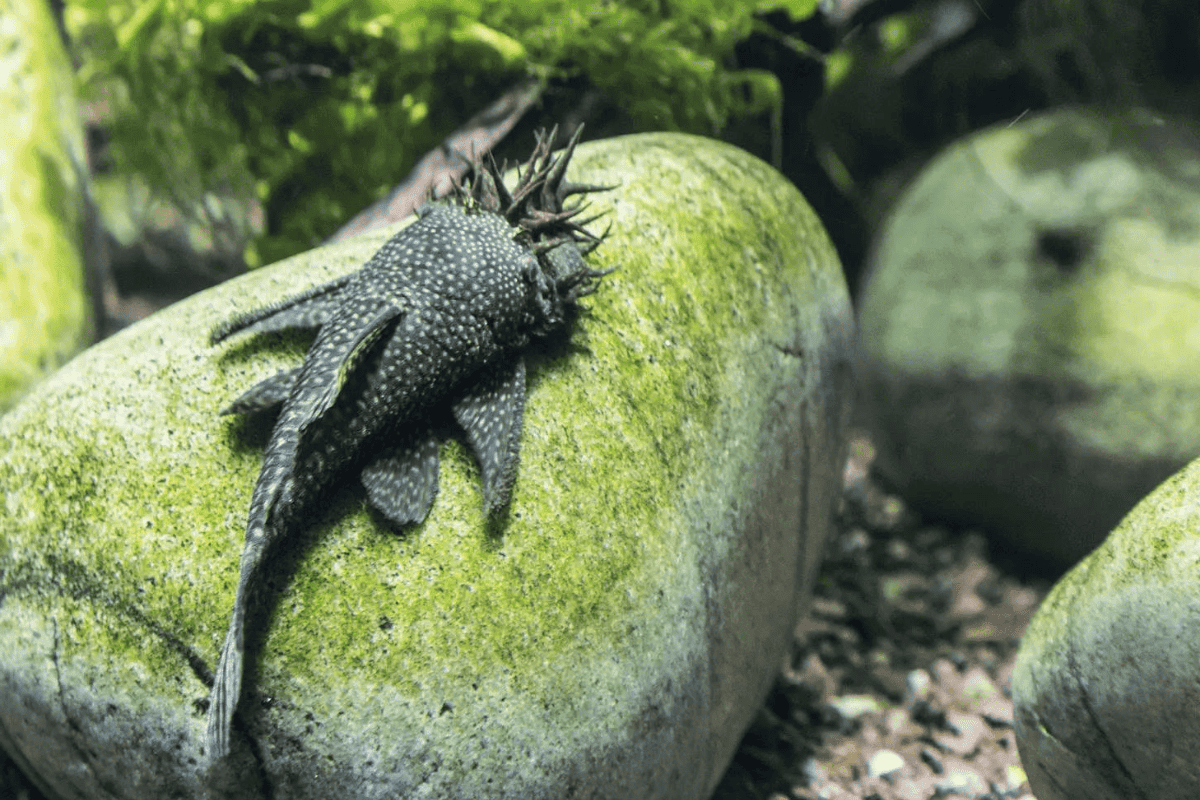
Do Plecos Like Heavily Planted Tanks?
Yes, Plecos can thrive in heavily planted tanks, but it depends on the species and the plants chosen. While some Plecos are gentle with plants, others might be more disruptive.
- Natural Habitat: Numerous Pleco species come from river settings rich in plant life, so a planted tank mirrors their native habitat.
- Protection and Cover: Thick plants provide Plecos with places to hide, giving them a sense of safety and lessening anxiety.
- Plant Choice: Opt for hardy plants like Java Fern or Anubias, as some Plecos might nibble on or uproot delicate plants.
Do Plecos Need Flow?
Yes, Plecos do benefit from water flow in their aquariums. Many species are native to rivers and streams, making them naturally adapted to environments with notable current.
- Natural Habitats: Plecos often come from fast-flowing waters, so they’re built to handle and even enjoy a decent flow in their tank.
- Flow Strength: While they appreciate flow, overly strong currents can stress Plecos. Aim for a moderate flow that mimics a gentle river.
- Oxygenation: A good water flow ensures better oxygenation, crucial for Plecos’ health and well-being.
- Debris Prevention: Consistent flow can prevent debris buildup, which is vital since Plecos feed off the bottom and need clean substrates.
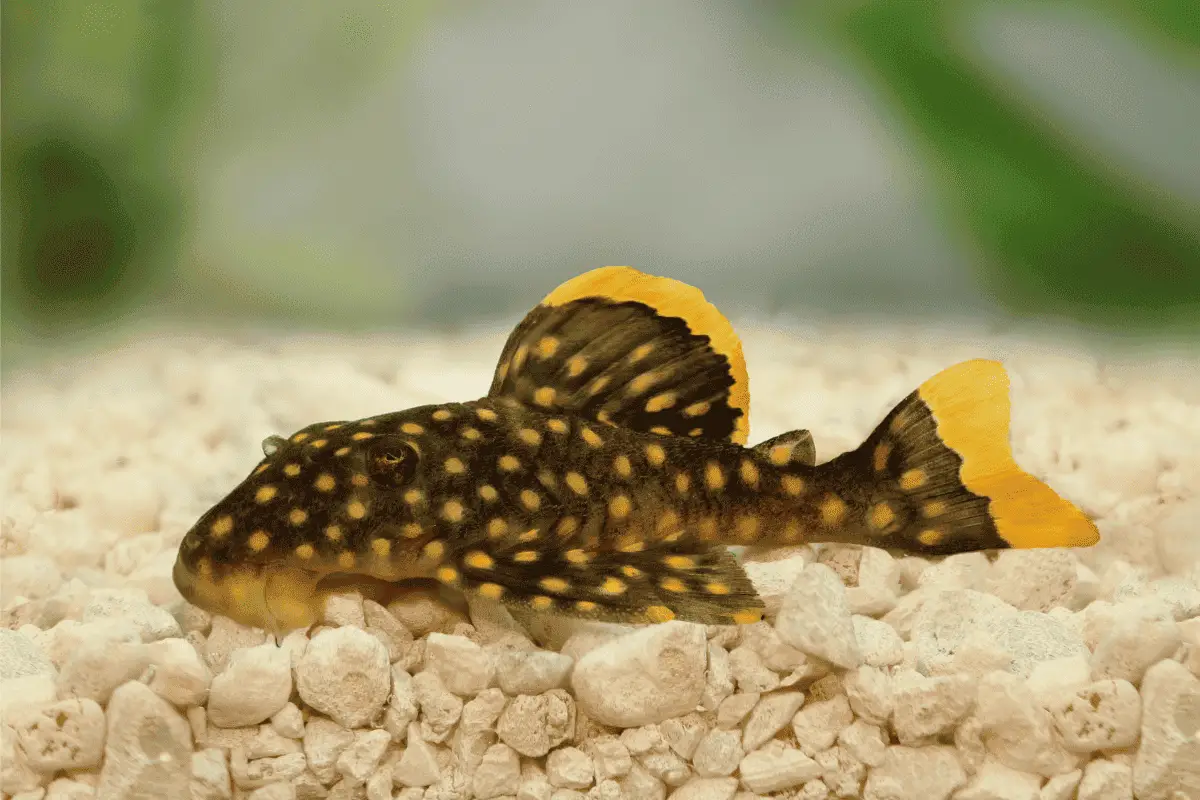
Do Plecos Grow According to Tank Size?
No, Plecos do not grow solely according to tank size. Their growth is determined by genetics, diet, and overall health, not just the size of their environment.
- Growth Myths: The myth that fish, including Plecos, will only grow to fit their tank is a misconception. They may become stunted, but it’s harmful.
- Stunting Issues: Keeping Plecos in undersized tanks can lead to health issues, poor development, and reduced lifespan.
- Species Variation: Pleco species have varied sizes. Common Plecos can reach 24 inches, while a Bristlenose might only reach 6 inches.
- Proper Housing: Always provide an adequately-sized tank based on the species’ potential full size to ensure optimal health and growth.
Conclusions
For those of you who are just skimming through, here’s a short recap:
- Tank size is crucial for Plecos’ well-being, with recommendations varying based on species, growth potential, and behavioral needs.
- Maintaining proper water parameters, including pH, temperature, and ammonia levels, is essential for the health and longevity of Plecos.
- Choosing the right equipment, including filters, heaters, and lighting, is vital to create a suitable environment for Plecos.
- Aquarium design and foliage, such as plants, driftwood, and hiding spots, play a significant role in providing a thriving habitat for Plecos.
- Selecting compatible tankmates and avoiding aggressive species is essential for creating a harmonious environment for Plecos.

